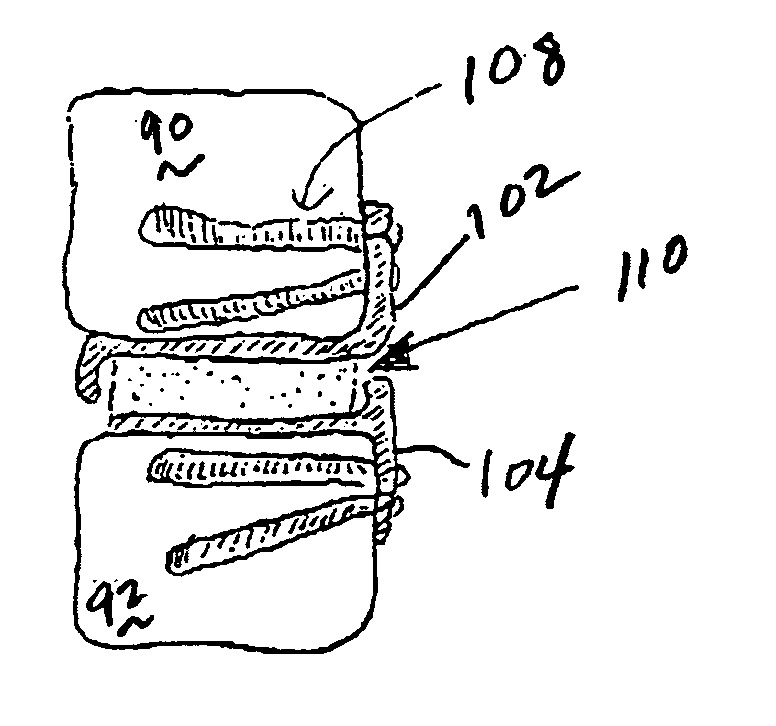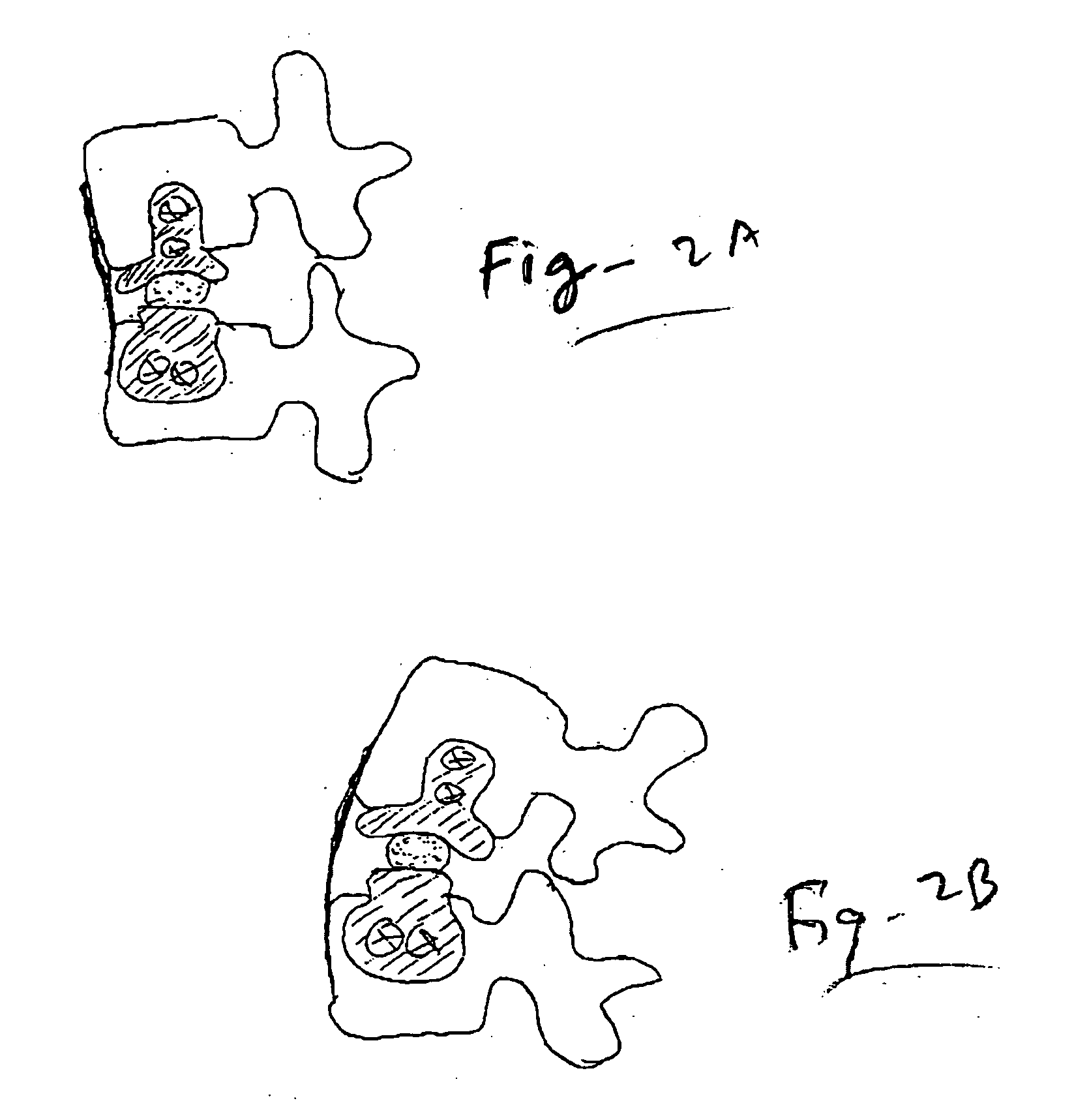Lateral-approach artificial disc replacements
a lateral approach and disc technology, applied in the field of spine surgery, can solve the problems of reduced bone density, reduced bone density, and reduced ability to handle compression load, and achieve the effect of facilitating bone ingrowth and recovering more quickly
- Summary
- Abstract
- Description
- Claims
- Application Information
AI Technical Summary
Benefits of technology
Problems solved by technology
Method used
Image
Examples
Embodiment Construction
[0030]FIG. 1A is an A-P view of an artificial disc replacement using a lateral approach according to the invention. In the preferred embodiments, ADRs according to the invention feature relatively large, plate-like extensions fastened to the vertebrae 90, 92. These large plate-like extensions 102, 104 allow screws such as 108 to diverge or converge for greater pull-out strength. A spacer is used between these extensions. A polyethylene cylinder 110 is preferably used to avoid the thin sections of polyethylene found in some ADR designs. Thin sections of polyethylene risk fracture and the need for replacement as the poly becomes thin from wear. The ADR can be inserted in parts through a working cannula during minimally invasive surgery.
[0031]FIG. 1B is a lateral view of the device of FIG. 1A showing how the anterior longitudinal ligament (ALL, 100) remains in tact using approaches according to this invention. The system is semi-constrained, allowing flexion extension and limited tran...
PUM
 Login to View More
Login to View More Abstract
Description
Claims
Application Information
 Login to View More
Login to View More - R&D
- Intellectual Property
- Life Sciences
- Materials
- Tech Scout
- Unparalleled Data Quality
- Higher Quality Content
- 60% Fewer Hallucinations
Browse by: Latest US Patents, China's latest patents, Technical Efficacy Thesaurus, Application Domain, Technology Topic, Popular Technical Reports.
© 2025 PatSnap. All rights reserved.Legal|Privacy policy|Modern Slavery Act Transparency Statement|Sitemap|About US| Contact US: help@patsnap.com



